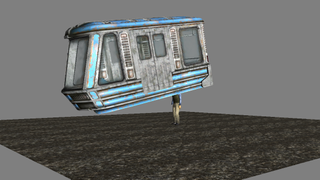
Recently we looked at the mysterious case of Fallout 3's train, which isn't trains at all, but an NPC wearing a train carriage as a glove, whose movement is powered by the player. You'd never know that this was the case without modding the game or taking a look in a level editor, it's just an odd development workaround.
There are lots of these. Planetside 2's ammo pads don't restock your guns, an invisible box-shaped NPC projecting an invisible reloading aura does it instead. We've hunted for a few of the stranger examples that draw back the curtain on the smoke-and-mirrors techniques used to make our favourite games function.

World of Warcraft is secretly run by rabbits
How do you keep track of a complex world full of quests made up of multiple stages and custom effects? The answer is rabbits. World of Warcraft is full of invisible rabbits, which Blizzard can use to trigger the next phase of a quest, or activate specific effects when the correct conditions are met. Every time you perform an action in WoW, there's a good chance you'll be killing a bunny. One such rabbit is [DND] Shaker, the cute little critter responsible for those pre-Cataclysm earthquakes.
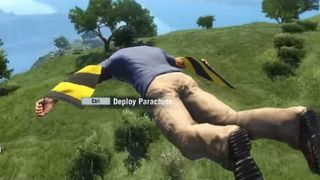
Your body does strange things in first person games
First person games often distort the human body in odd ways to keep your hands in view. When you use iron sights on a rifle you essentially ram the butt of the weapon through your own neck and squint down the barrel. It feels like you’re aiming normally in first-person, but the horrifying truth is revealed when you activate a third person camera. Far Cry 3 is a good example, as is Mirror’s Edge for the bizarre bodily contortions Faith performs in the (spoiler alert!) final cutscene. Of course, when a game has a dedicated third-person mode or, as in Far Cry 4’s case, co-op, proper animations are added and we’re spared the nightmare vision of a headless man swallowing his own elbows as he tries to aim a rifle at a tiger.
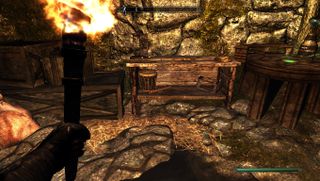
Tables against walls in Skyrim aren’t tables
Why create an entirely new table when you can bury a bookcase up to its neck and achieve the same effect? The fewer objects that the game has to load into a scene, the better. Tricks like this saves the development time required take to make a nice side table, and helps the game run smoothly at the same time. Likewise, object textures can be resized, tweaked and redeployed in unusual ways, because it can be quicker to transform an existing texture than store a bespoke one in memory. Here's AlexP4's shot, uncovering the truth behind Skyrim's tables.
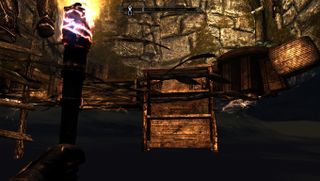
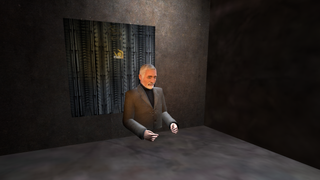
Breen's Half-Life 2 propoganda is broadcast live from an in-game studio
To set the tone of Half-Life 2's post-invasion dystopia, City 17 is full of screens broadcasting the message of its Overseer. Dr. Breen's transmission is one of the first things Freeman sees when he arrives in the city. It's not a video, though, but rather a live-feed from an isolated room. You can go to this room by using the 'noclip' command in the console. Inside, you'll find Breen's character model reciting his lines. At least, you'll find his top half. As you can only see his head on-screen, the developers had no need to give this Breen any legs.
As an added bonus, you can interrupt this "Breencast" by killing Breen. Or you can give it a new star. It's a live feed, so whatever (or whoever) you put in Breen's place will be broadcast out to all the screens on that map.
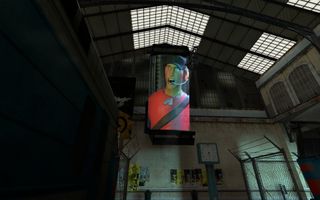
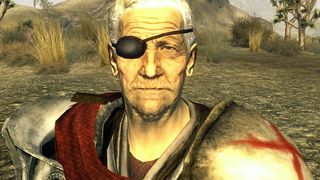
Fallout: New Vegas’ intro slideshow isn’t what it seems
At the beginning (and indeed the end) of Fallout: New Vegas you’re shown a few still shots with some expository narration. It turns out these are slideshows that take place in the game world, and the narrator is an NPC called Ron the Narrator (named after Ron Perlman, who did some narration for Fallout 3 and New Vegas) standing a few feet away from you. As YouTuber ICEnJAM shows in a (spoilery!) video of the final slideshow, you can break the facade using console commands to teleport your view to Ron, and then unlock the camera to show the whole setup. It’s quite surreal.
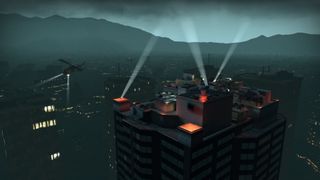
No Mercy’s city is actually a tiny model city
When you’re standing on top of the skyscraper at the end of Left 4 Dead’s No Mercy campaign you look out over the entire city and see the mountains beyond. These non-interactive backdrops are called skyboxes. The way Valve’s Hammer level editor renders skyboxes is to blow them up from a tiny model version built somewhere hidden in the level. If you noclip in No Mercy and dive down through the skyscraper you can find the skybox model, complete with the dome-shaped textures used to create the moonlit sky. It’s tiny, so you can stomp around like a big grizzled godzilla. What’s more, the moon itself is painted onto the inside of this dome texture. Here’s Bill playing astronaut to demonstrate.
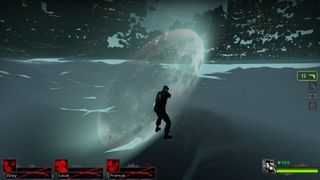
And here's an underside view of the model city. The level is far above.
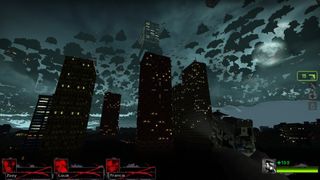
There will be loads more of these techniques out there, so we're going to keep an eye out and write them up as we find them. Share any you've encountered in the comments.

PC Gamer is the global authority on PC games—starting in 1993 with the magazine, and then in 2010 with this website you're currently reading. We have writers across the US, Canada, UK and Australia, who you can read about here.
Most Popular


